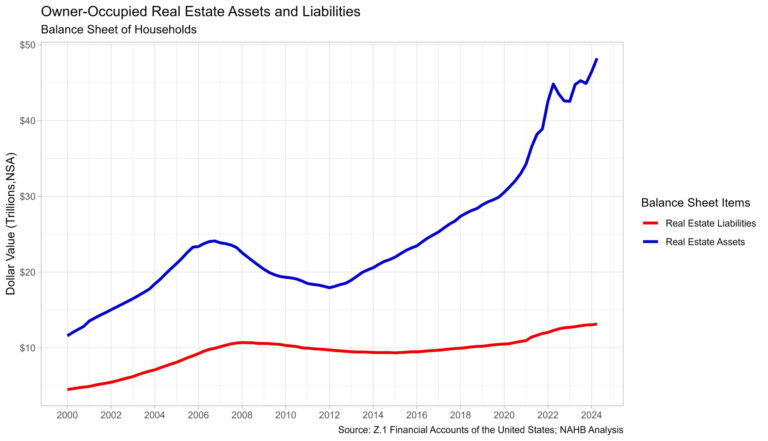Multifamily units completed in 2024 recorded their highest level since 1986 at 608,000 units, according to NAHB analysis of the Census Bureau’s Survey of Construction. For the eighth consecutive year, most multifamily units were in buildings with 50 or more units (these will be labeled as high-density buildings).
As shown below, this trend is relatively new. Dating back to the earliest estimates in the series (1972), most multifamily units were historically located in buildings with less than 50 units (low-medium density buildings). Of the total 608,000 multifamily units completed in 2024, 330,000 (54%) were in high-density buildings while the remaining 278,000 (46%) were in low-medium density buildings.
Regional Distribution
The South continued to be the leading region in terms of units completed, rising from 212,000 in 2023 to 292,000 completions in 2024. The South accounted for 48% of the total number of completions; the West held 27% (163,000), the Midwest 14% (87,000), and the Northeast 11% (68,000). Singularly, the South was the only region where the number of units completed in low-medium density buildings outpaced the number in high-density buildings. The South had 147,000 completions in low-medium density compared to 145,000 units in high-density.
Conversely, in the Midwest and Northeast the number of units in high-density buildings nearly doubled those of low-medium density buildings. For the Midwest, there were 58,000 units in high-density buildings and 29,000 low-medium density units. The Northeast had 45,000 units in high-density buildings and 23,000 low-medium density units. The West featured an almost 50/50 split with 82,000 high-density units and 81,000 low-medium density.
Built-for-Rent
Among multifamily units completed in 2024, 95% were built-for-rent at a level of 580,000. Over half of these units (55%) were in a building with 50 units or more. This is a seismic shift towards high-density buildings, as this share was only 25% in 2004. Over the past twenty years, there has consistently been a falling share of units in buildings with 10-19 units, as the share in 2004 was 24%, while in 2024 this share only accounts for 4% of completed units.
Built-for-Sale
The number of multifamily units built-for-sale rose from 20,000 in 2023 to 29,000 in 2024. High-density buildings continued to be the primary type of building where these units were built, with 40% of built-for-sale units being completed in buildings with 50+ units. This share was up from 28% in 2023. The largest loss in market share for multifamily built-for-sale units was for buildings with 10-19 units, dropping from 23% in 2023 to just 13% in 2024.
Discover more from Eye On Housing
Subscribe to get the latest posts sent to your email.
This article was originally published by a eyeonhousing.org . Read the Original article here. .


